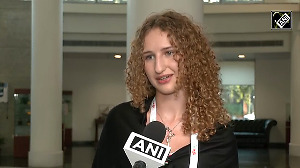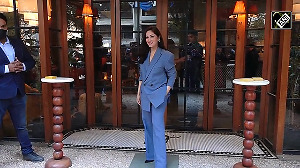Prime Minister Manmohan Singh on Monday mooted a Pan-Asian Free Trade Area, along the lines of North American Free Trade Area and the European Union, as part of efforts to make the Asian region an economic power house.
"I believe the objective basis for the economies of our region to come together exists. The subjective desire to create an East Asian Community, bringing together ASEAN, China, Japan, Korea, and also Australia and New Zealand, is manifest. Like the North American Free Trade Area, and the expanding European Union, a Pan-Asian FTA will be a dynamic, open and inclusive association of the countries of our region," he said.
"I am convinced this is the only way to move forward, even though there will be sceptics and it may not be easy. But for believers it is eminently possible," Singh told the ASEAN Business Advisory Council's special leaders dialogue with the theme India-Partnering with ASEAN for Mutual Prosperity and Shared Interests.
The prime minister said the challenges today were to create and maintain a regional and international environment that enables us to attain and sustain high rates of economic growth.
"We must create opportunities for entrepreneurship to flourish not only locally, but also regionally and globally. Economic activity cannot be confined to national borders; it must be channelized to fuel growth in each other's countries," he told the business leaders.
Regional trading arrangements have become important building blocks of multilateralism in an increasingly globalized world, he noted.
"Therefore, we seek closer economic interaction with ASEAN. We are committed to bringing down our tariffs to levels prevalent in ASEAN countries, to dismantle unwarranted barriers and to expand global capital flows. We must walk this road together, so that enterprises in our countries find it a beneficial process, not a hurtful one," he said.
"There may be losers, and there will certainly be gainers, but on the whole, we will obtain a win-win outcome, the prime minister said.
Observing that India is a vibrant marketplace, he said businesses from abroad, including from ASEAN, Japan and the Republic of Korea, find India a productive and profitable business destination.
Pointing out to China, he said, "The gathering momentum of India-China relations is visible in the expansion of our bilateral economic ties."
The prime minister noted that the process of engagement in the Asian region had truly taken off. "I am confident it will be self-sustaining, enhancing direct contact between peoples of the region," he said, adding that India's share in the global flows of goods, services, knowledge and culture had grown exponentially in the past decade.
"Today, our external economic profile is robust and reassuring to investors, at home and abroad. After registering an 8 per cent rate of growth in 2003-2004, our economy recorded upwards of 7.0 per cent growth for two years in a row. Indeed, in the first half of 2005-06, we have touched 8.0 per cent," he said.
In the past year and a half, our policies relating to investment, taxation, foreign trade, FDI, banking, finance and capital markets have evolved to make Indian industry and enterprise more competitive globally.
"We have launched a massive program for rural renewal which will upgrade rural infrastructure and incomes and thereby expand the domestic market. New policies are enabling public-private partnership in the modernisation of roads, railways, ports, airports, power and urban infrastructure," he told the audience.
Singh pointed out that India had concluded a Framework Agreement on Comprehensive Economic Cooperation with ASEAN in 2003 and with Singapore more recently.
"A similar model is being developed with Thailand, and India is also setting up a Joint Study Group for conclusion of Free Trade Agreements with Malaysia, Indonesia, Japan and the Republic of Korea.
"We are also examining ways to develop regional trading arrangements with China. These are all milestones on the road to the eventual creation of an Asian Economic Community," he said.
The PRIME MINISTER said the East Asian Community was a natural extension of the ASEAN-India engagement process.
"The India-ASEAN Free Trade Agreement can become the first step in the process. The limited FTA is a beginning but we must ensure that it leads to explosive growth in trade and investment."
He said the essence of the idea was to build up closer linkages amongst India and the countries of the ASEAN.
"The key to the future is the development of synergies. In the 1960s, synergies between scientists in India and scientists at the International Rice Research Institute in the Philippines contributed to the Green Revolution in India.
This resulted in filling India's granaries with foodgrains. "We have both benefited from each other," he said.
The prime minister said India has now developed expertise in high technology areas such as IT, space, biotechnology and pharmaceuticals. "We are ready to share our skills in these sectors with our partners in ASEAN and other developing countries. Each of these sectors presents its own opportunities for India-ASEAN cooperation".
With the growing recognition of complementary strengths, he said India is developing increasing links to ASEAN and East Asian production networks. These links relate to the knowledge intensive segments of the value chain. They include software development, R&D, engineering and designing and high quality manufacturing, and are invaluable to the process of integration.
"The ASEAN region has an abundance of natural resources and significant technological skills. These provide a natural base for the growth of synergies and integration between ASEAN and India - in both trade and investment. I believe we can double the present level of bilateral trade by 2007, reaching a target of $30 billion by then," he added.






 © 2025
© 2025